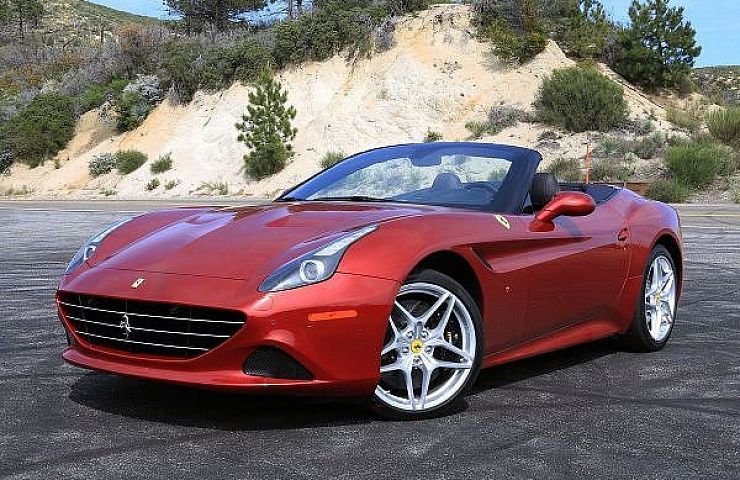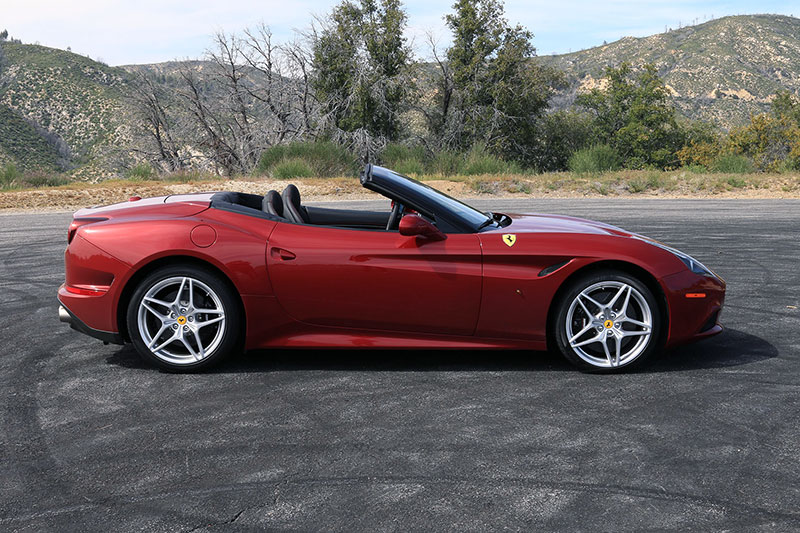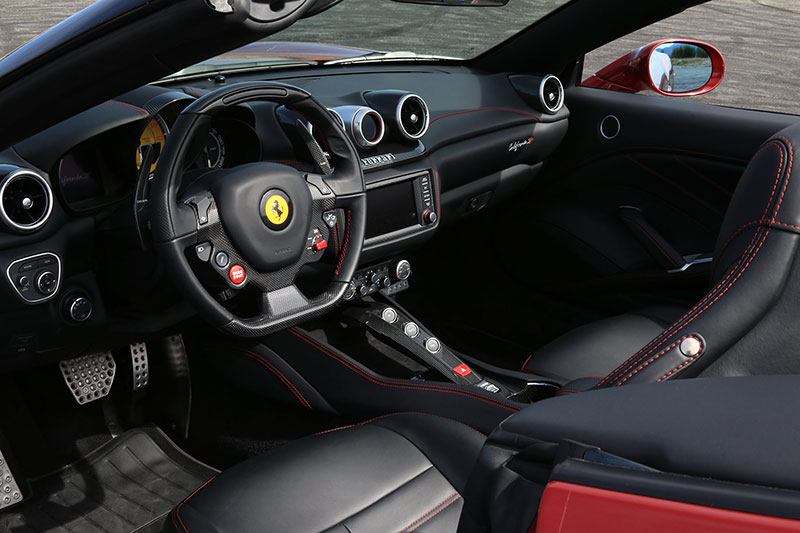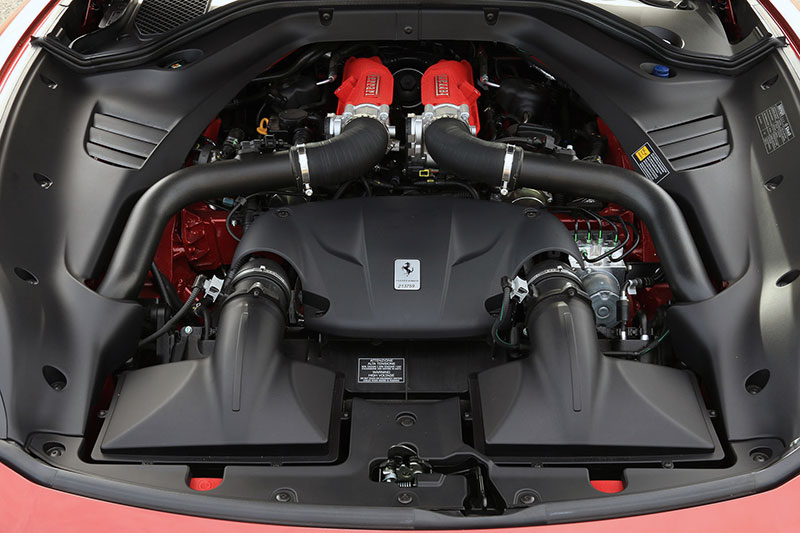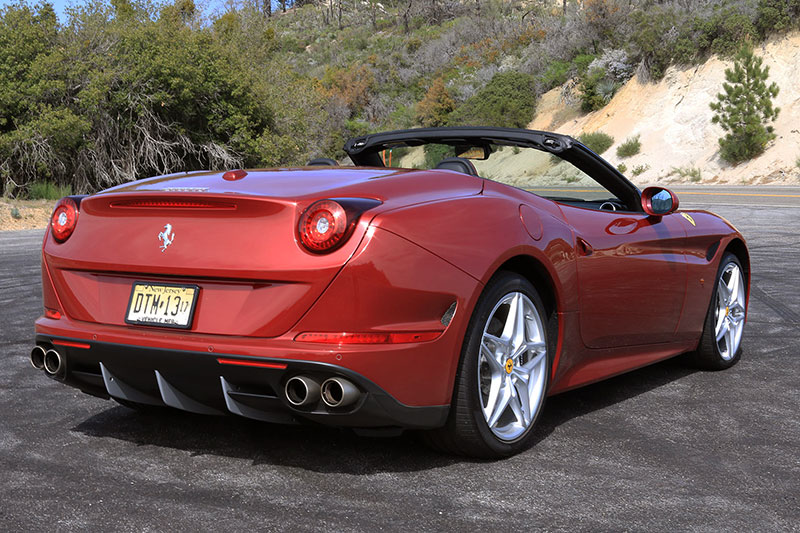Some Ferrari loyalists have been lukewarm about the Ferrari California, which was introduced in 2008. The rap is that it relies too heavily on style while lacking the performance prowess to back up the iconic badge on the hood. Yet, those arguments don’t fully consider how the T (for Turbo) version of the California has shifted the model’s personality in a more mature direction.
The California T’s performance numbers—for example, zero-to-60 in 3.6 seconds—put it in supercar territory. But after a few days behind the wheel, we would hesitate to fully classify the California T as a supercar. It’s more accurate to view the California T as an exceptionally capable grand touring machine—one that’s less concerned with shaving tenths off lap times and more about the driving experience. It’s a car at its best with the top down, the radio up, with a twisting open stretch of tarmac laid out in front.
The California T, introduced in 2014 for the 2015 model year, marks the Italian automaker’s first foray back into turbocharged road cars since the legendary F40 model of the 1980s. Like the rest of the automotive industry, Ferrari is moving away from larger naturally aspirated engines toward smaller displacement motors supplemented by forced induction. In terms of output, it means that the California T’s new twin turbocharged 3.9-liter V8 makes 553 horsepower and 557 pound-feet of torque—walloping increases of 70 hp and 185 lb-ft of torque over the outgoing model’s naturally aspirated 4.3-liter V8.
This change in engine configuration has a substantial impact not only on power delivery, but also the vehicle’s identity. Turbochargers deliver their rush of additional power only after they’ve spooled up, which requires the engine to get to a certain RPM range before they’re active. This in turn has a tendency to cause big jumps in output across the rev range, removing the linearity we enjoy from naturally aspirated motors. Ferrari sought to combat the lag by using variable levels of boost throughout all but the last of the California T’s seven gears. The move allowed the California T to maintain its punch, while delivering a 15-percent drop in emissions and a similar degree of improvement in fuel economy. This dual function—simultaneously adding power and efficiency—is the chief goal of going turbo for many automakers.
The California’s seven-speed dual clutch transmission also got a new set of gear ratios to better utilize the turbocharged power band, while the adaptive suspension was re-tuned, and the traction control system was revamped for more effective power delivery.
Looking the Part
Ferrari underscored the shift in technology with a revision of the sheet metal as well. Borrowing design inspiration from the F12 Berlinetta, Ferrari’s other front-engine offering, the beauty of this shift in personality is in full display when the top comes down. That’s when the exhaust system—which is inherently quieter than the previous model due to the muffling effect of turbochargers—provides the perfect sound track to the California T’s stellar grand touring experience.
The Ferrari-inspired childhood daydreams of every car guy or gal were never about setting lap records. They were about the sounds, sensations, and simple enjoyments of piloting a red Ferrari convertible. The California T continues to deliver on that reverie.
See Ferrari California Cars for sale on eBay.

